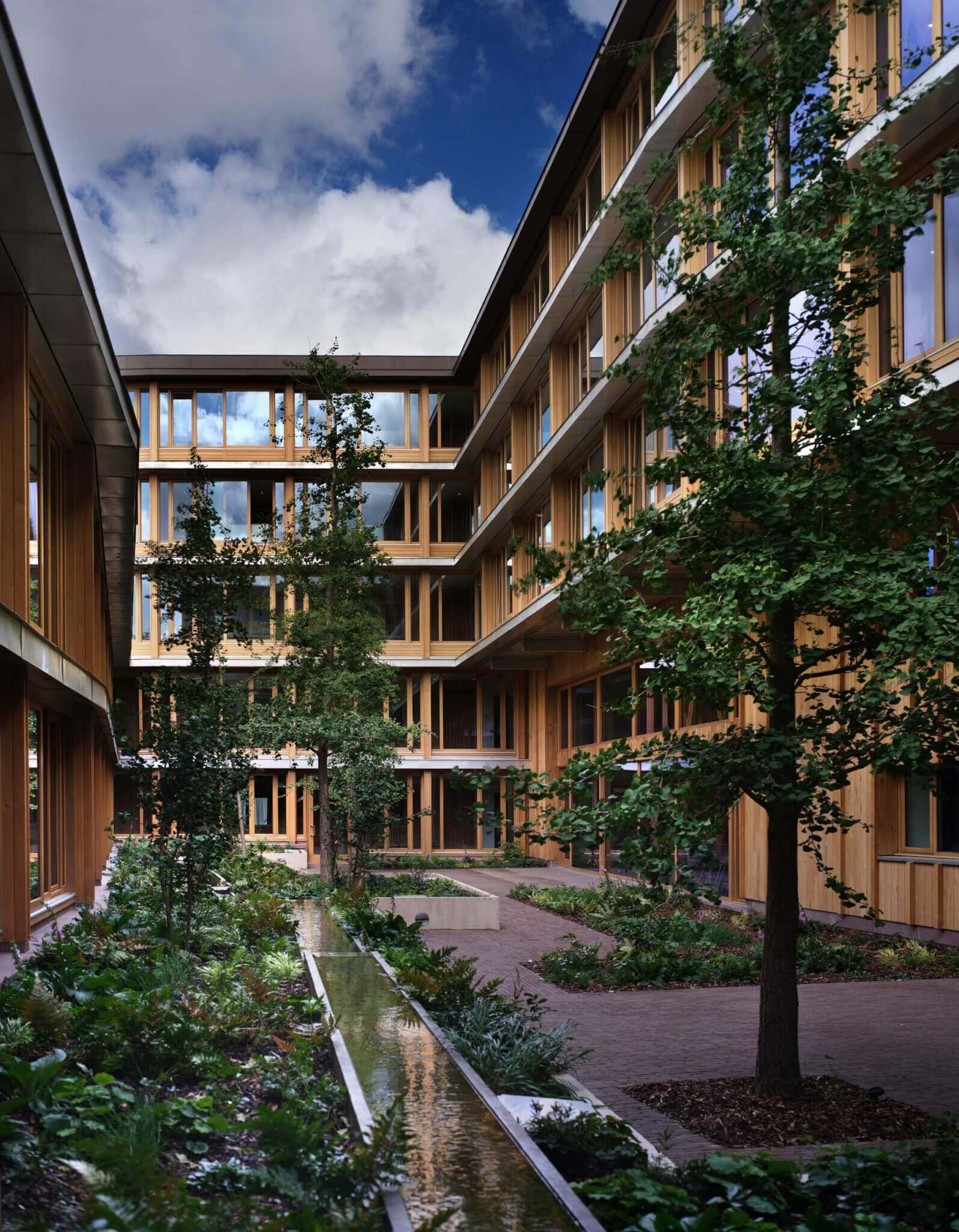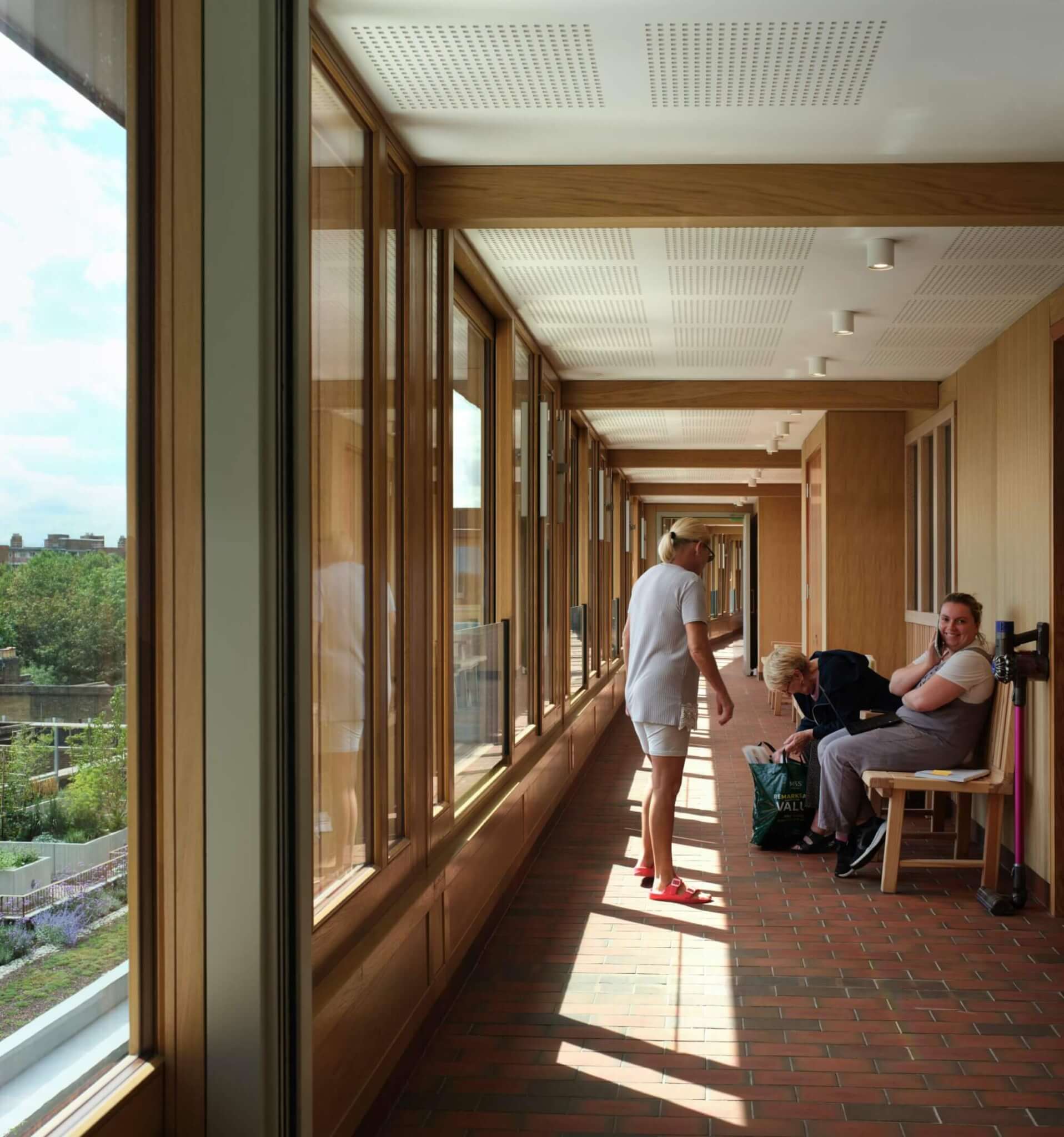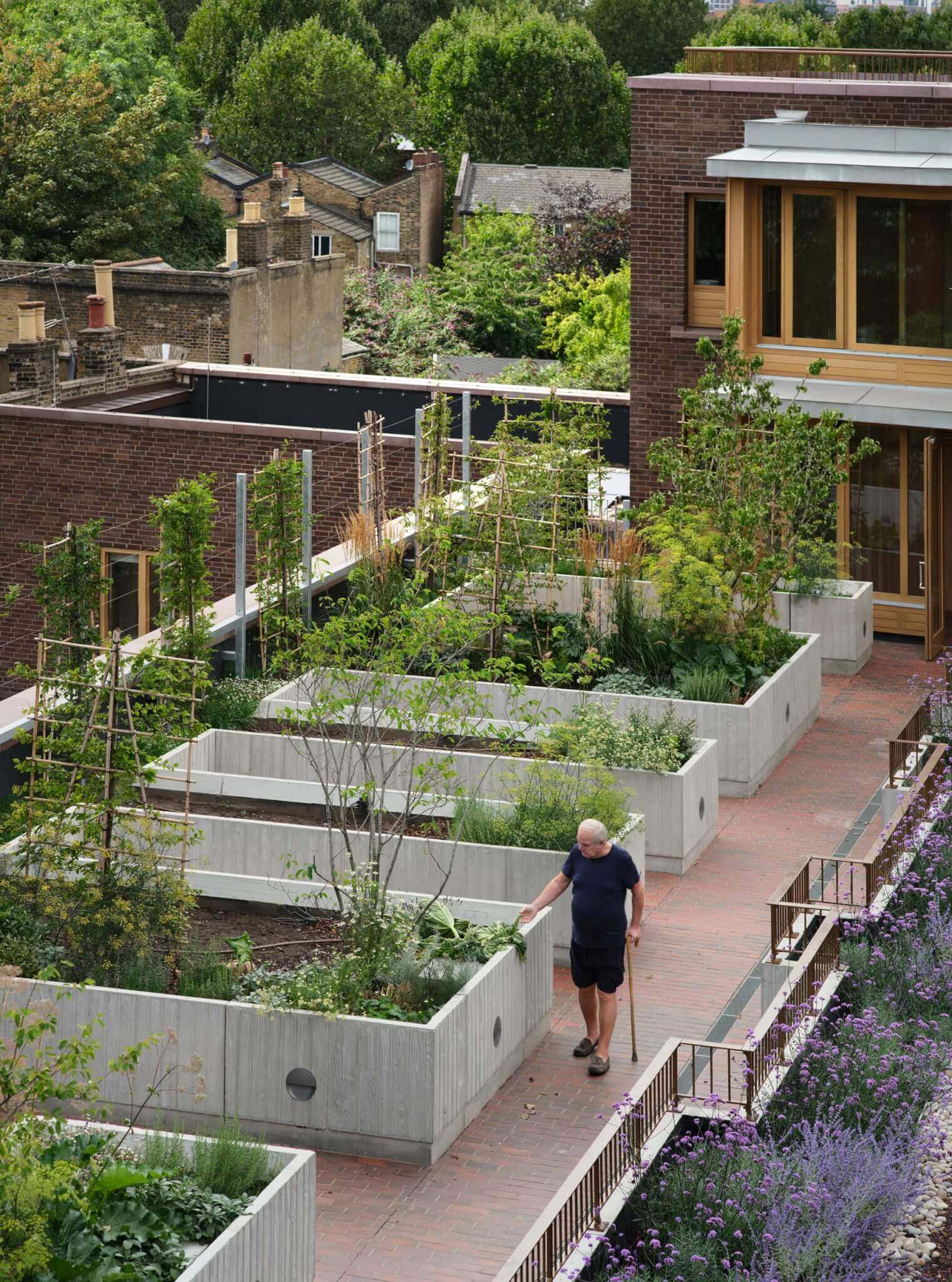In London, an almshouse designed by Witherford Watson Mann (WWM) took home the 2025 RIBA Stirling Prize. Appleby Blue, a senior housing facility beat out projects that included the restoration of Big Ben, two small residential projects, a college designed by Allies and Morrison, and a lab facility in Cambridge by Herzog & de Meuron and BDP to win the annual prize awarded by the Royal Institute of British Architects (RIBA).
This win marks Witherford Watson Mann’s second Stirling Prize win, and fourth time the London-based firm has been shortlisted for the prize. (Its first win was in 2013 for its work on Astley Castle.) This ranks the firm alongside three other much larger practices with robust U.K. operations and portfolios of global commissions: Zaha Hadid Architects, Richard Rogers Partnership/ RSHP, and Wilkinson Eyre.
The almshouse, covered by AN in our January/February 2024 issue, was built for the 500-year-old charity United St Saviour’s. However, almshouse history goes back even further than that to the 10th century, when they were constructed to provide affordable accommodation to vulnerable groups. Today, they are regarded as the oldest form of social housing in the U.K. and have risen in importance as the need for affordable housing increases.

“This project is a clarion call for a new form of housing at a pivotal moment,” said jury member and Architectural Association director Ingrid Schroder. “Built against the backdrop of two crises, an acute housing shortage and a growing loneliness epidemic among older people, Appleby Blue offers a hopeful and imaginative response, where residents and the surrounding community are brought together through the transformative nature of the design.”
WWM’s belief that good architecture values “light, space and joy” is pervasive throughout the project. Bay windows, framed in oak, span two stories of the brick facade, letting ample light into the interiors. Local standards dictated that each of the units have a private amenity space, but for many residents a place to socialize with others and gather is much more important, so collective amenity spaces, wide communal balconies, and a central courtyard were prioritized instead. The element of joy is apparent, especially outside in the gardens on a sunny day.

“Working closely and imaginatively with United St. Saviour’s Charity, we’ve created an environment that reduces loneliness, encourages connection, and supports a good later life,” Stephen Witherford, director of WWM, said. “The charity has made social housing aspirational, enabling people to grow old locally with the right support, benefiting both residents and the wider Southwark community.”

The winning project brings to mind the 2023 Stirling Prize recipient, the John Morden Centre. Like Appleby Blue, the Morden Centre likewise is a brick and wood ensemble, programmed with social and care spaces for seniors. Both projects are a stark contrast to last year’s winner: the Elizabeth Line.
Recent press has criticized the Stirling Prize for being too “London-centric” and for not addressing pressing issues of our time. But it seems like for the people who call Appleby Blue home every day is a win.
→ Continue reading at The Architect's Newspaper
